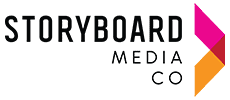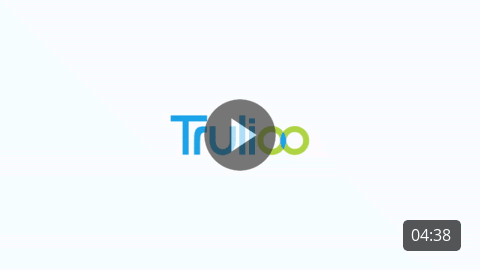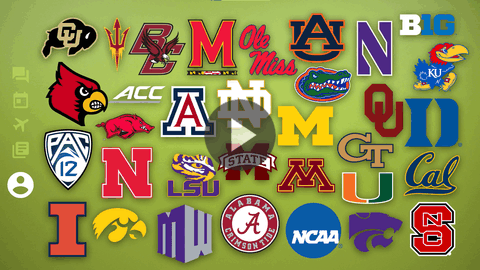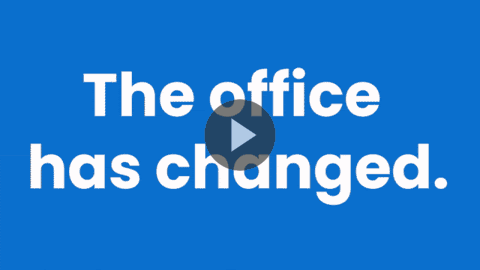Sales teams and lanyard fetishists agree that trade shows are the place to be. Is that solely because of the wide range of high-quality trade show video content?
Probably not, at least not exclusively so, but when you optimize your video for trade shows, your day will go more smoothly, you’ll capture your audience’s attention, and your video investment will have a pronounced return.
So, how do you prepare your video for a trade show, convention, or industry expo event? We’ve got some best practices to set your content apart from the competition.
Know Your Venue (But Prepare for Everything)
Every venue is unique, but what unites them together is their predictable capacity for unpredictability. That means you need backup plans on backup plans on backup plans to ensure your audience gets to watch your content.
Does the venue say that they have accessible Wi-Fi? Well, saying that they’ll have working Wi-Fi for every booth to stream video content and hundreds if not thousands of attendees to scan QR codes and marketing teams to post regular updates on social media is a lot easier than actually having it.
So, even if you plan on utilizing the internet, make sure you have options that will work when the wi-fi inevitably glitches. For example, hard drives containing video files will make it easier to showcase videos without needing access to the world wide web. In addition, USB drives with your pre-loaded content can make for nifty swag and allow attendees to view your trade show videos later should there be additional electrical issues.
Make sure you also have all the necessary cables and second-team cables in case your starters pull a hammy. While some venues may have backup cords available for use, they may also charge you literally hundreds of dollars to use them. Considering you can get a high-quality HDMI cable online or from a nearby electronics retailer for a fraction of that price, it makes more sense to have a deep squad of cords and cables ready to go.
Capture Your Audience’s Attention (But Refrain From Audio)
A trade show is a competition for attention. Booths will employ all manner of tricks to attract eyeballs, so a captivating video is a must.
To cut through the clatter, chatter, and faux-laughter, it’s better to keep things simple. Clear messaging and bold, brand-appropriate colors and fonts will do more for your audience than a visually loud aesthetic.
Take this trade show video we produced for Trulioo. (Click the play button for the full video.)
Usually, we’d need a talking head to convey the complexity of what Trulioo does. However, with the chyron’s big, bold lettering, the message is easier to land. The audience can read it, even from a distance, and understand how Trulioo could help their business.
After repeatedly checking your volume and mute settings, you should realize that the video has no audio component. Yes, this does stray from our typical “audio is important, too” advice, but the cacophony of trade show noises will drown out the hard work of your audio engineers.
Additionally, your venue may not even have speakers for you to use, and lugging around your own equipment can cost you time, money, and relaxed back muscles. So, skip the audio and keep the messaging strictly visual.
If you are stuck with a talking head in this situation, ensure you have pre-scripted closed-captioning turned on and that it’s not blocking any essential visual elements. In fact, if your trade show video has any scripted or spoken piece, use closed captioning. Again, the goal is not only to make your video engaging but also accessible to a roving audience.
Another trade show video that exemplifies these best practices is this one from Teamworks. (Click the play button for the full video.)
The simple graphics help convention attendees quickly identify if they’re part of the targeted audience. The features and benefits are easy to understand. The video is high-quality. It captures your attention without being gratuitous.
It’s also a pretty solid length for a video at a trade show booth. Since the content will run on a loop, you ideally want something that strikes a balance between repetitive and drawn-out.
If someone’s at your booth for 15 minutes, you don’t want them to see the same, looping 30-second video 30 times. On the other hand, you also don’t want to bore them with a video that never quite gets to the point.
The sweet spot is usually around two to three minutes, but anything between one and five minutes will work. If you measure your video in seconds, you may want to lengthen it. If it’s over five minutes, consider cutting and repurposing the content. Speaking of repurposing content…
Repurpose Your Content (But Keep It Targeted)
Let’s take a look at this video for Splashtop. (Click the play button for the full video loop.)
This is, in many ways, an ideal trade show video. It has a simple message, expressed boldly, and there’s no audio fighting for space in your ear canal.
Yet, this content wasn’t produced strictly to be shown in convention hall settings. It’s repurposed footage from our video marketing deliverable for Splashtop. We optimized it for trade show settings, but otherwise, it’s the same content used in their regular marketing channels.
So, the lesson here is you don’t need to produce an entirely new video for every industry expo or booth-based get-together. Instead, take what you already have and turn it into something new.
To keep things fresh, you can always keep things modular, too. Sandwich audience-specific content between repurposed, evergreen footage and you’ve got the framework for every trade show video. You’ll be able to swap in relevant content and rearrange it so you can greet every industry expo audience with a “new” video.
Additionally, taking the example of the previous section, if you have content you like but doesn’t quite fit into what you want playing at your booth, you can use it as video marketing before the trade show. Toss in the dates of the event and how to find your booth once they arrive, and you’ve got content that invites, informs, and doesn’t ruin the surprise of the video you plan on showing.
You can also use the content after the trade show to remind attendees of your brand’s benefits or recap the event to those unable to attend.
You have even more content to repurpose if you combine that with footage captured at the trade show — such as interactions at the booth, on-stage presentations, or featured interviews and discussions. Put it on your social media feeds, post it on your blog or website, and email it to your contact list.
Optimize Your Trade Show Videos
Trade shows are an impactful way to meet leads, market your products and services, and show off your company-branded polo shirt. And the best way to do all three is by following the best practices for trade show video optimization.
If you’d like your trade show content to attract your targeted audience, reach out to us today to get the conversation started.




